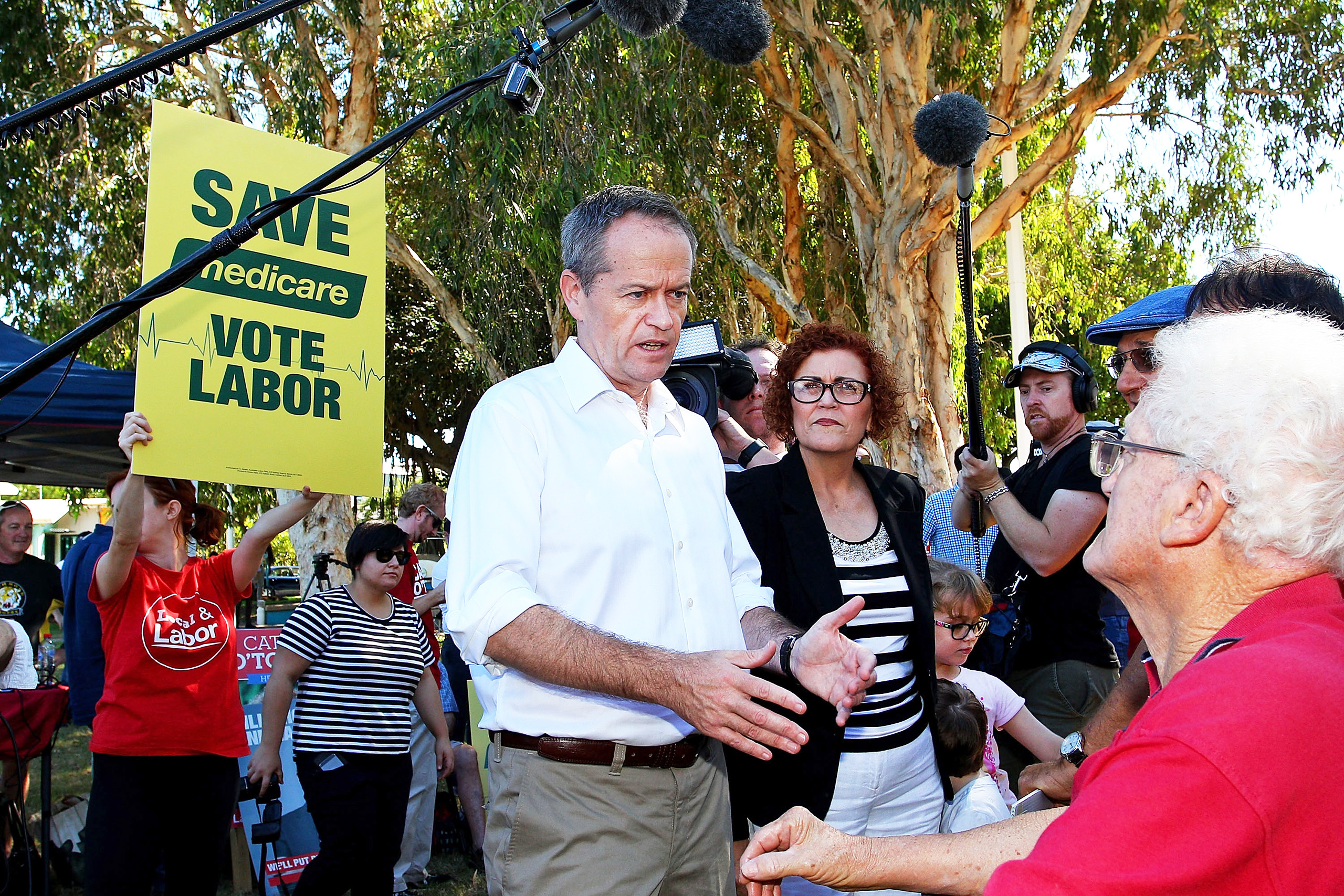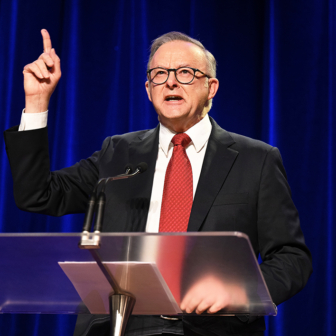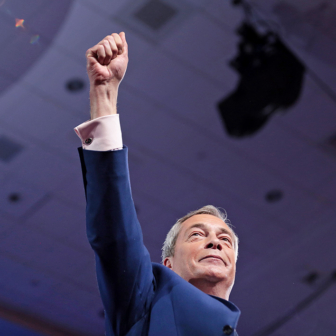It was 2014, Peter Dutton was health minister, and the Abbott government’s first budget announced that concession-card holders and other bulk-billed patients would now be charged $7 to see a GP. This “co-payment” was necessary, said Dutton, to make Medicare sustainable.
When it became clear the measure wouldn’t pass the Senate, he came up with an equally courageous option (in Sir Humphrey’s terms) with similar budget savings: a large reduction in Medicare rebates to GPs. The aim was clear: to put the onus on doctors to stop bulk billing patients.
Doctors howled down this attempt to get them to do the government’s dirty work. In a survey of 1100 readers of Australian Doctor magazine, 46 per cent said Dutton was the worst health minister in thirty-five years. (The health minister thirty-five years earlier was Ralph Hunt, who oversaw the Fraser government’s dismantling of Labor’s earlier medical insurance scheme, Medibank.)
In the end none of the health savings, or many other features of the Abbott government’s hairy-chested first budget, went ahead. Abbott performed a full backflip, declaring there would be no new healthcare proposals without the broad backing of the medical profession. By then Dutton had been moved to Immigration and Border Protection, where he was able to burnish his hard-man image against asylum seekers coming by boat.
As we move into full election mode, expect to hear plenty more about Dutton’s ill-fated co-payment and attack on bulk-billing. Labor has already signalled it will be deploying one of its favourite political weapons — a scare campaign on health.
We can be certain it won’t bring up another attempt to impose a Medicare co-payment, though the Coalition may well oblige. In that case, in 1991, it was the Hawke government that announced a $3.50 co-payment for non-concessional bulk-billed patients, with the same arguments about making Medicare sustainable. Its fate was similar to that of the Dutton’s plan: it didn’t survive the backlash from doctors and the Labor Party.
Governments looking for budget savings periodically turn to health as a rapidly growing area of spending ripe for savings. The economic argument is straightforward: charging a price, or a higher one, will reduce demand.
A $7 payment — or today’s equivalent of a little over $9 — might not seem like a major barrier to seeing the doctor. But the people who will stop making appointments are typically the ones who can least afford it, who have the worst health problems and who pay the most visits to the doctor. Sick people are generally less likely to have well-paying jobs; postponing visits to the doctor is more likely to lead to more serious illness and much more expensive treatment and hospitalisation. In other words, a co-payment is not just a particularly regressive measure but also counterproductive in terms of long-term costs to the health system.
Even without co-payments, though, the cost to patients has been steadily increasing, as the Liberals are keen to point out when Labor ties to scare voters. The rate of bulk-billing was 88.3 per cent when the Coalition left office in 2022, Mr Dutton and his colleagues say, but has fallen to 77.3 per cent. This is basically confirmed by the government’s own figures: 87.3 per cent at the time of the last election and 77.2 per cent on the last figures available in October last year.
The figure has been trending downwards for a long time but the more recent reduction was exaggerated by the pandemic, when all vaccinations were covered by bulk-billing. (If the figures often strike people as high, one reason is that they refer to the number of services bulk-billed, rather than the number of patients, with those who are less well-off and see the doctor more often more likely to be bulk-billed.)
The main influence on the longer-term downwards trend has been the freeze on GP rebates, which started under the Gillard government in 2013 (something else Labor won’t be reminding us of), was extended by the Abbott and Turnbull governments and, under Labor, was followed by only partial rises that didn’t cover doctors’ increased costs. Recent months have seen a small increase in bulk-billing following the government’s tripling of an incentive to encourage doctors to bulk bill families with children under sixteen and concession-card holders.
As the election draws nearer, Labor will be looking for opportunities to fight on its favoured battlegrounds. Health is one of the strongest and it’s where its scare campaigns have been most effective.
Paul Keating’s demolition of opposition leader John Hewson’s promise to introduce a 15 per cent GST is generally credited with the coalition losing the “unloseable” 1993 election. But Hewson himself has nominated health as a bigger factor, and there is evidence to back him up. The Australian Election Study — the detailed academic survey of voter attitudes conducted after each election — concluded that while the GST was responsible for an 0.2 per cent swing to Labor in 1993, health policy prompted a swing of almost 1 per cent — larger than any other issue.
Labor had some meaty material to work with. The Coalition promised to abolish bulk-billing except for pensioners, other healthcare cardholders and people with disabilities (thus not going as far as Dutton twenty-one years later); to cut the Medicare rebate for the rest of the population from 85 per cent to 75 per cent; and to require higher-income earners to pay an income tax surcharge if they did not take out private health insurance (subsequently implemented by the Howard government).
It was all part of the detailed policy called Fightback!, which came to be known as the longest suicide note in political history. The Liberals and Nationals learned a lesson from that experience: their attempts to dismantle Medibank and its successor Medicare, starting with the Fraser government, did not play well with voters. John Howard went to the 1996 election supporting Medicare, though that didn’t stop his and subsequent Coalition governments undermining the scheme by subsidising and otherwise supporting private health insurance.
Finding the facts to accuse the Coalition of an intention to dismantle Medicare entirely has become harder, but when has that ever stopped a scare campaign? Labor’s 2016 “Mediscare” campaign against the Turnbull government relied on a health department proposal to privatise the Medicare payments system. Turned into the false claim that the Coalition would hand over the whole of healthcare to the private sector, it did the job intended, producing a late swing to Labor and a near-death experience for the Turnbull government. An Essential Media poll late in the campaign showed half of all voters thought it likely the Liberals would attempt to privatise Medicare if they won the election.
The opposition learnt another lesson from that episode: take scare campaigns seriously, irrespective of their relationship to facts. In recent weeks, it has come out of the blocks quickly with vociferous denials of treasurer Jim Chalmers’s claim that medicines and pensions were “not safe under the Coalition” and his reminder that Dutton came “after Medicare last time,” a reference to the 2014 budget.
In his pre-campaign speech last weekend in Melbourne Dutton pledged to guarantee “the growing funding of Medicare” and expand GP numbers — meaningless promises given that the Medicare budget grows every year and so does the number of doctors. He also promised to “incentivise” junior doctors to train in general practices, though with no detail, and made one very specific pledge: to restore the number of Medicare-subsidised psychological sessions to twenty from their present level of ten.
There was one further sentence: “Our review of the Medicare and Pharmaceutical Benefits schemes will result in cheaper and new medicines for women.” Health minister Mark Butler seized on that sentence the next day but left out the bit about cheaper and new medicines for women. “Buried in that speech,” he claimed, “was an admission that [Dutton] intends to conduct a review of Medicare and the PBS if he’s elected over the next few months,” something Butler said would send a chill down the spines of patients, doctors and nurses.
Labor will be quite happy if it forces Dutton into a vigorous denial. It will mean the Coalition is fighting on Labor territory; it will draw attention to Butler’s claim and feed into voters’ cynicism about politicians’ denials and the Coalition’s track record on health; and it will leave doubts in at least some voters’ minds. That is how scare campaigns work.
Labor is signalling that it will also be announcing some positives on health, including measures targeted at the issue on which it is most vulnerable — the cost of living. They are likely to include a further increase in Medicare rebates and more urgent-care clinics providing free treatment as an alternative to over-burdened emergency departments.
Butler is also flagging a more fundamental reform, although this one is unlikely to receive a great deal of attention in the cut and thrust of an election campaign. This is to shift away from the fee-for-service payments to GPs for individual episodes of care towards a blended system in which a proportion of funding goes towards coordinated, multidisciplinary care delivered in medical practices by nurses, physiotherapists, psychologists, dieticians and other health professionals.
This approach reflects the fact that heart disease, diabetes, mental illness and other chronic and co-morbid conditions now represent close to half of all cases, compared to 12 per cent in 1962 and 27 per cent in 2015. Using the cautious, incremental approach that typifies the Albanese government, Butler has been preparing the way for change since coming to government.
In September he received a report on incentives for general practice from an expert advisory panel made up of health economists, health professionals and former health department head Stephen Duckett. The report outlines where government policy should logically proceed: “One solution has been around for decades: moving primary care away from excessive reliance on fee-for-service as the primary source of practice income.” It puts forward a model under which an average of 60 per cent of general practice income is derived from fee-for-service and the remaining 40 per cent funds services by other health professionals.
This would mean a reduced reliance on GPs, ultimately leading to a ratio of one doctor to one other health professional (compared to the present ratio of around three doctors to one). Doctors have traditionally resisted any move away from fee-for-service and other health professionals intruding on their patch. But faced with the reality of a health system that is no longer fit for purpose, their attitude might be changing.
During the election campaign, Labor could well wheel out the report last year by the Commonwealth Fund, the US-based international research body, which ranked Australia’s health system ahead of nine other developed nations — in order, the Netherlands, Britain, New Zealand, France, Sweden Canada, Switzerland, Germany and the United States. Butler certainly made a meal of it at the time, with a release headed “Medicare Top Performing Health System in the World.” As he put it, “in its fortieth year, Australians should all be proud that we have a Medicare system that provides universal care to all Australians, no matter your means.”
Except it doesn’t. Universal care is compromised by the large and increasing numbers who delay seeing the doctor or undergoing surgery because they can’t afford it. Just a few weeks after Butler amplified the Commonwealth Fund’s boast (and not yet in campaign mode) he was declaring Medicare to be “in real trouble… It is in trouble in terms of its sustainability, the pipeline of workforce, the fact it doesn’t really reflect the patient profile of today.”
The contradiction is not as stark as it seems. The Commonwealth Fund ranked Australia first for equity (narrowly defined) and health outcomes, second for administrative efficiency but ninth out of ten for access to care. The report points out that the roughly half of Australian patients without private health insurance may have to wait longer to receive services and that “affordability is also a noted problem.”
Having a universal health system that some people can’t afford is a lot like not having a universal system at all. The worst country according to access — the one behind Australia — is the United States, where people frequently face the choice of not receiving treatment or going bankrupt.
The choice is not as stark in Australia, but nevertheless it is often an invidious one: between receiving timely treatment covered only partly by private insurance or waiting for months or years for free treatment in public hospitals.
Out-of-pocket costs in Australia comprise a larger proportion of overall health spending than in many other developed countries. Between the inception of Medicare in 1984 and 2022, the average patient contribution for GP services that were not bulk-billed has increased by 294 per cent after adjusting for inflation. By 2023 the figure was $41.40. In 2022–23, 7 per cent of Australians delayed or did not see a doctor because of cost.
Out-of-pocket costs for specialist services are more common, typically much higher and steadily growing. In October last year, 57 per cent of specialist fees were covered by Medicare, compared to 68 per cent ten years earlier and 74 per cent twenty years ago. In 2022–23, 10.5 per cent of Australians cited cost as a reason for delaying or avoiding a specialist visit.
For hospital procedures the costs can be much higher. While a stay in a private hospital is generally covered by private insurance, often only a fraction of the cost of surgery can be claimed by the patient.
The figures for dental visits are much worse again. In 2022–23, 30 per cent of Australians had delayed or avoided seeing a dentist in the previous year, and there were 87,400 hospitalisations for dental conditions that could have been avoided by earlier treatment.
Dental treatment has never been covered properly by Medicare, nor by Medibank, its predecessor under the Whitlam government. Successive Labor governments have acknowledged the anomaly but have only ever made partial attempts to correct it. A Keating government program of free dental care for lower income earners was abolished by the Howard government. A strictly means-tested program of subsidised dental care for children introduced by the Gillard government has had limited impact.
Butler acknowledges that including dental in Medicare is in the Labor Party’s platform and “completely makes sense… The mouth is part of the body and a pretty important part of it at that.” But the government’s focus is on dealing with the fundamentals of Medicare, he said.
The reality is that healthcare will become increasingly expensive as the population ages and particularly as medical technology continues to advance rapidly. Available measures to slow the growth include a greater emphasis on relatively inexpensive primary care, more resources for prevention and stronger action against doctors making excessive claims for reimbursement from Medicare.
But Medicare itself also needs fundamental reform, which takes us back to Butler’s diagnosis that it is “in real trouble.” It is a scheme that threatens to be overwhelmed by the rapid rise in chronic conditions, mental health, and the obesity and diabetes epidemics.
That’s why the most important need is to change how Medicare delivers services to reflect the reality of modern medical practice. But this is the issue less likely to attract attention in the election campaign, crowded out by political imperatives like a good old-fashioned scare campaign. •




